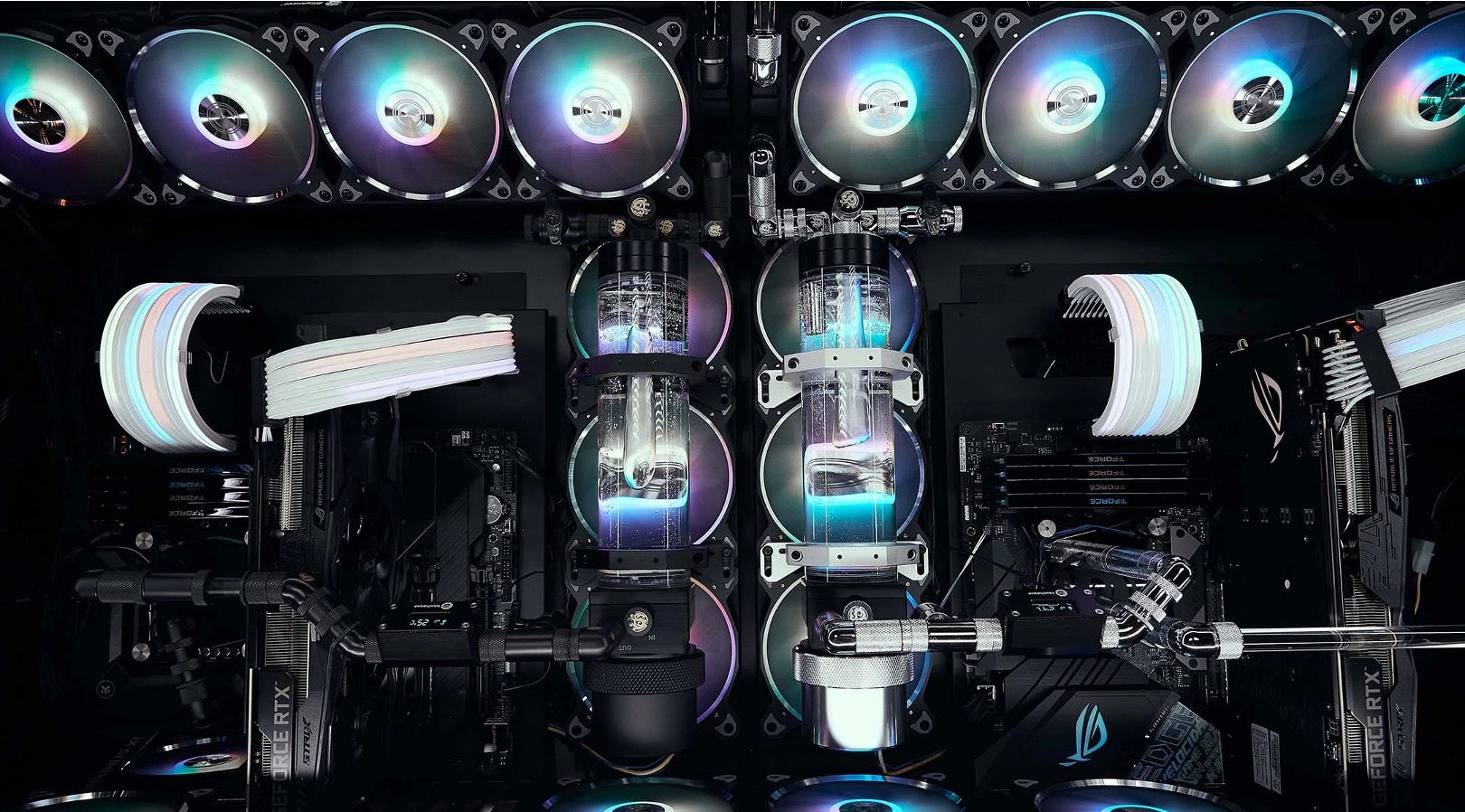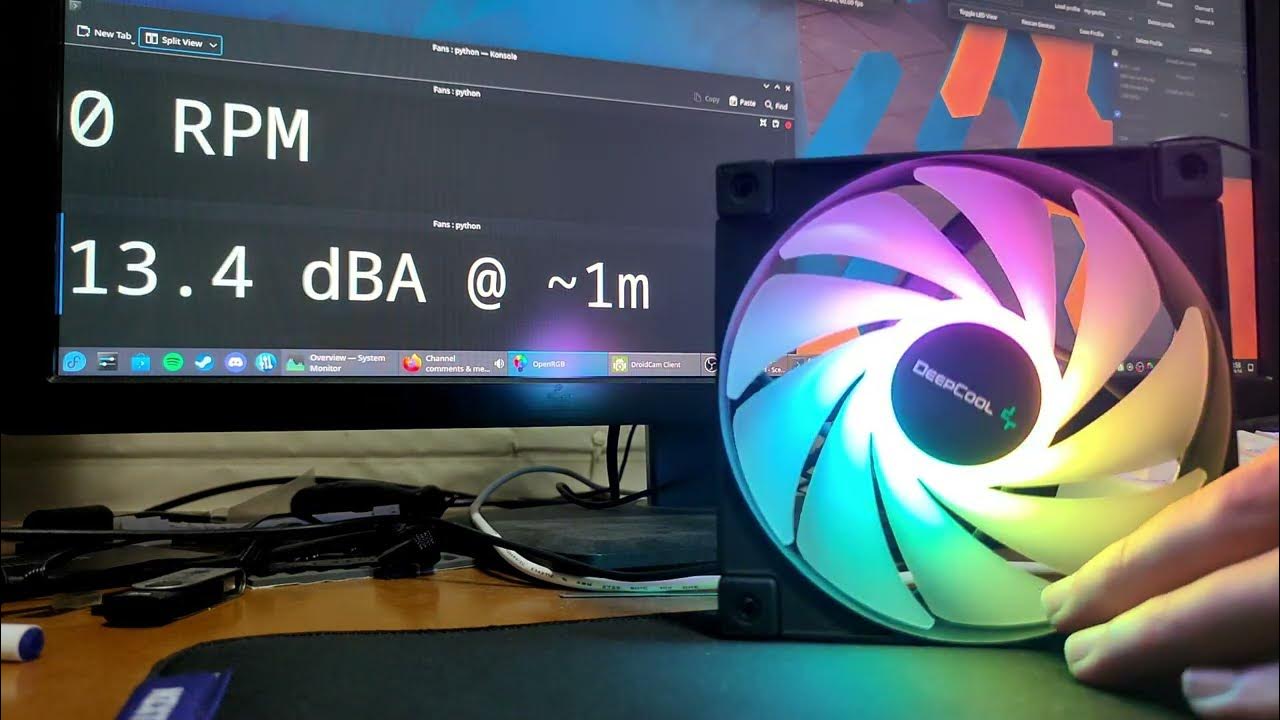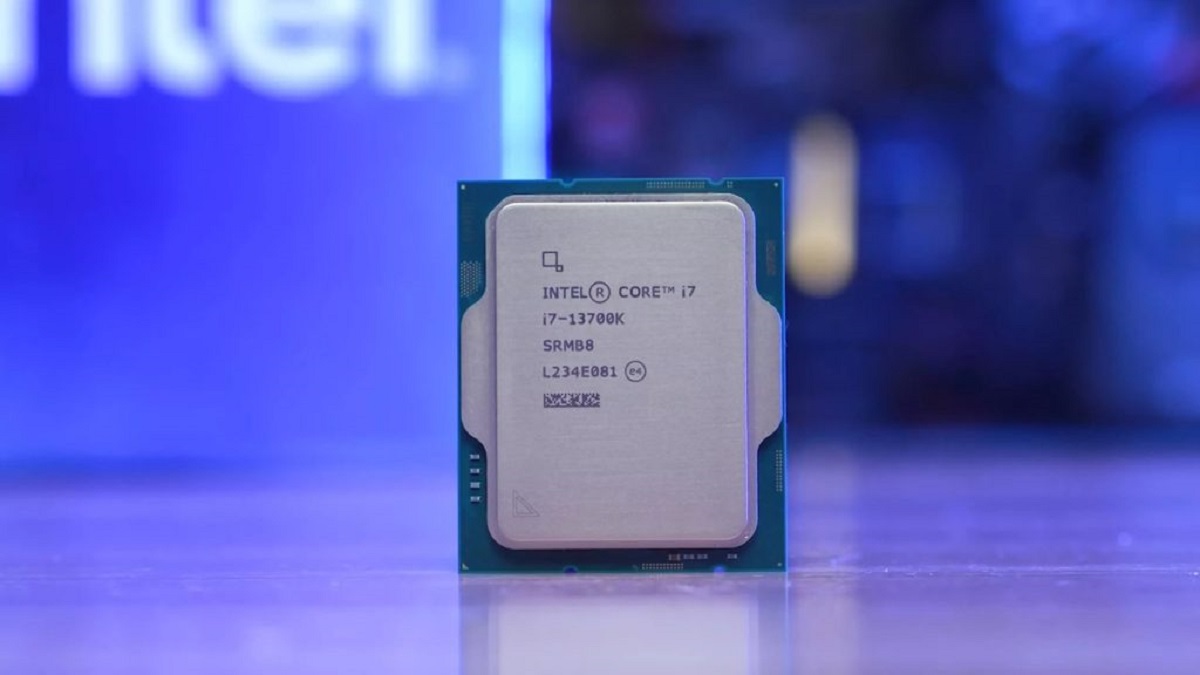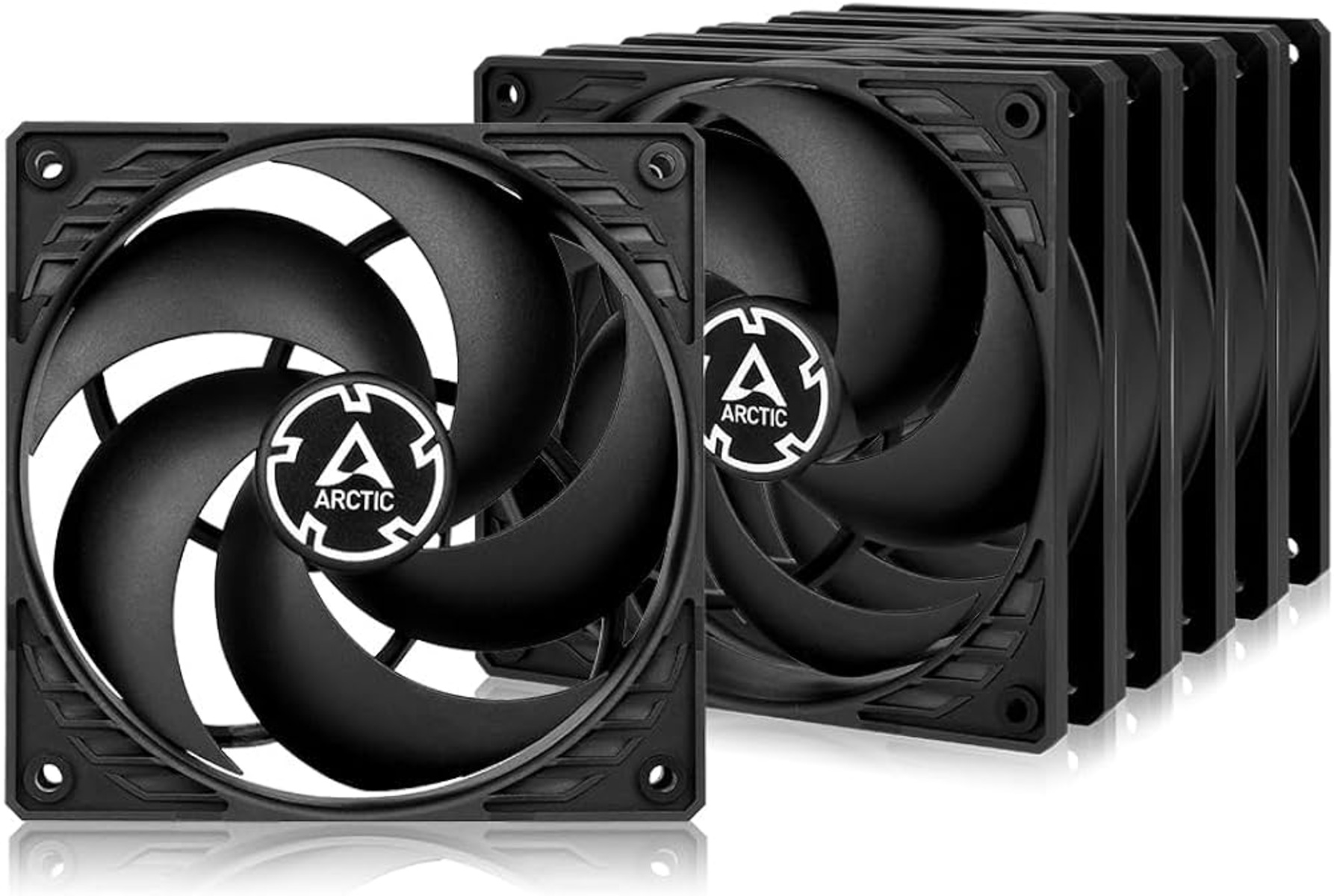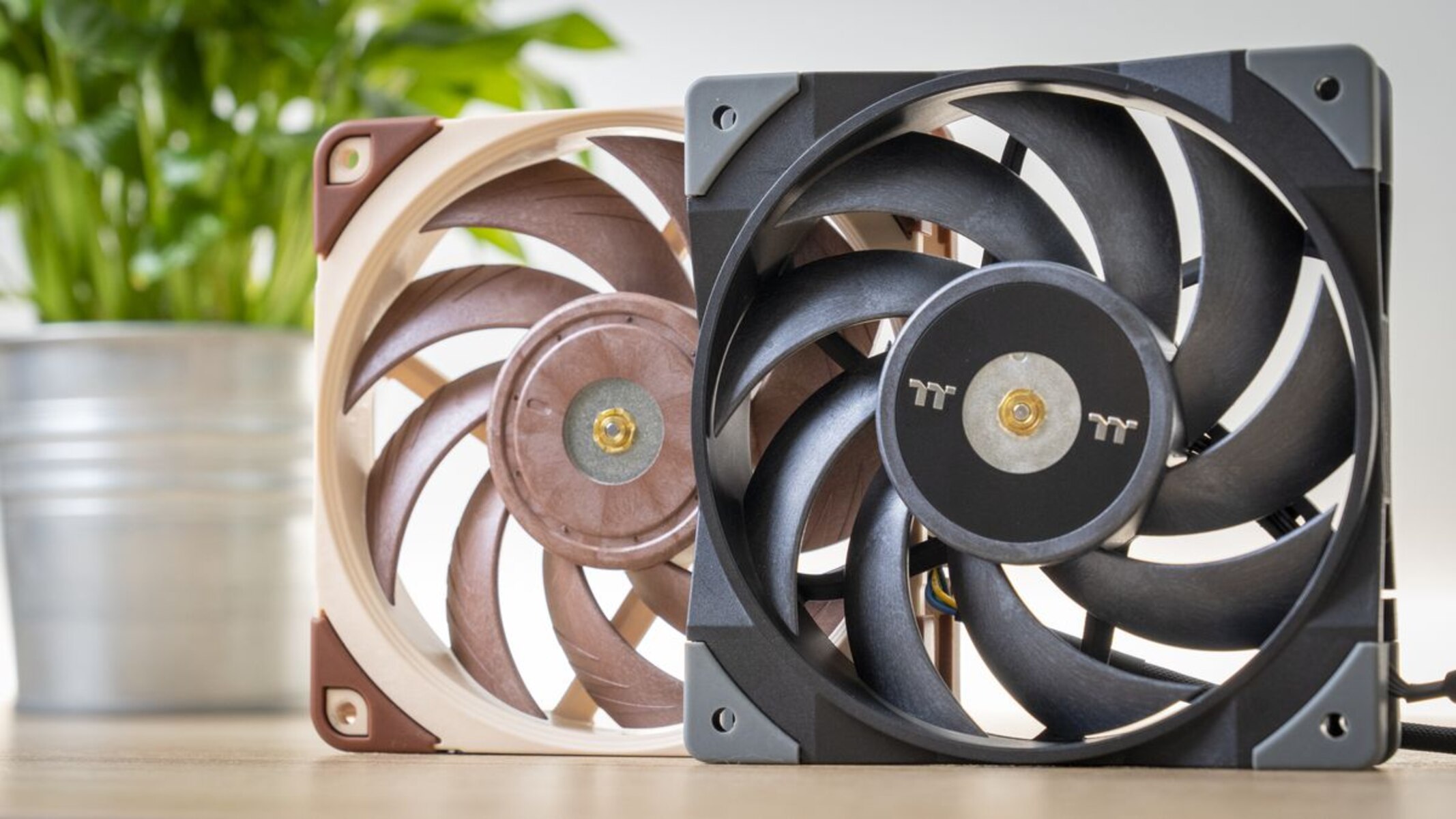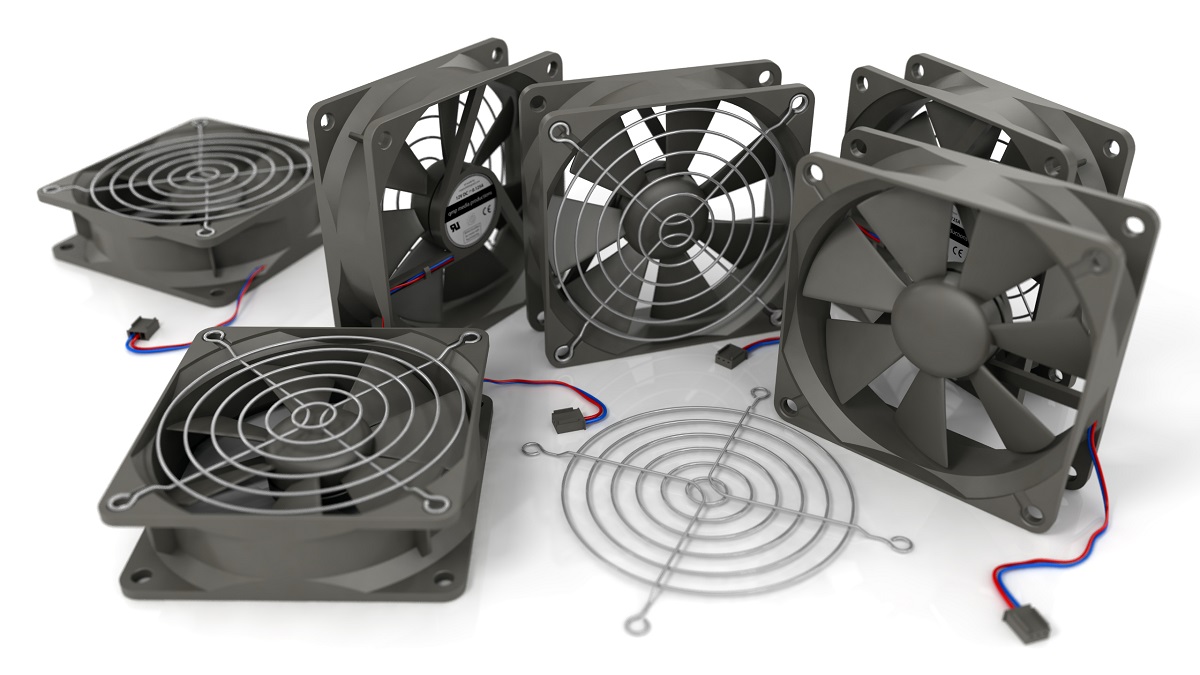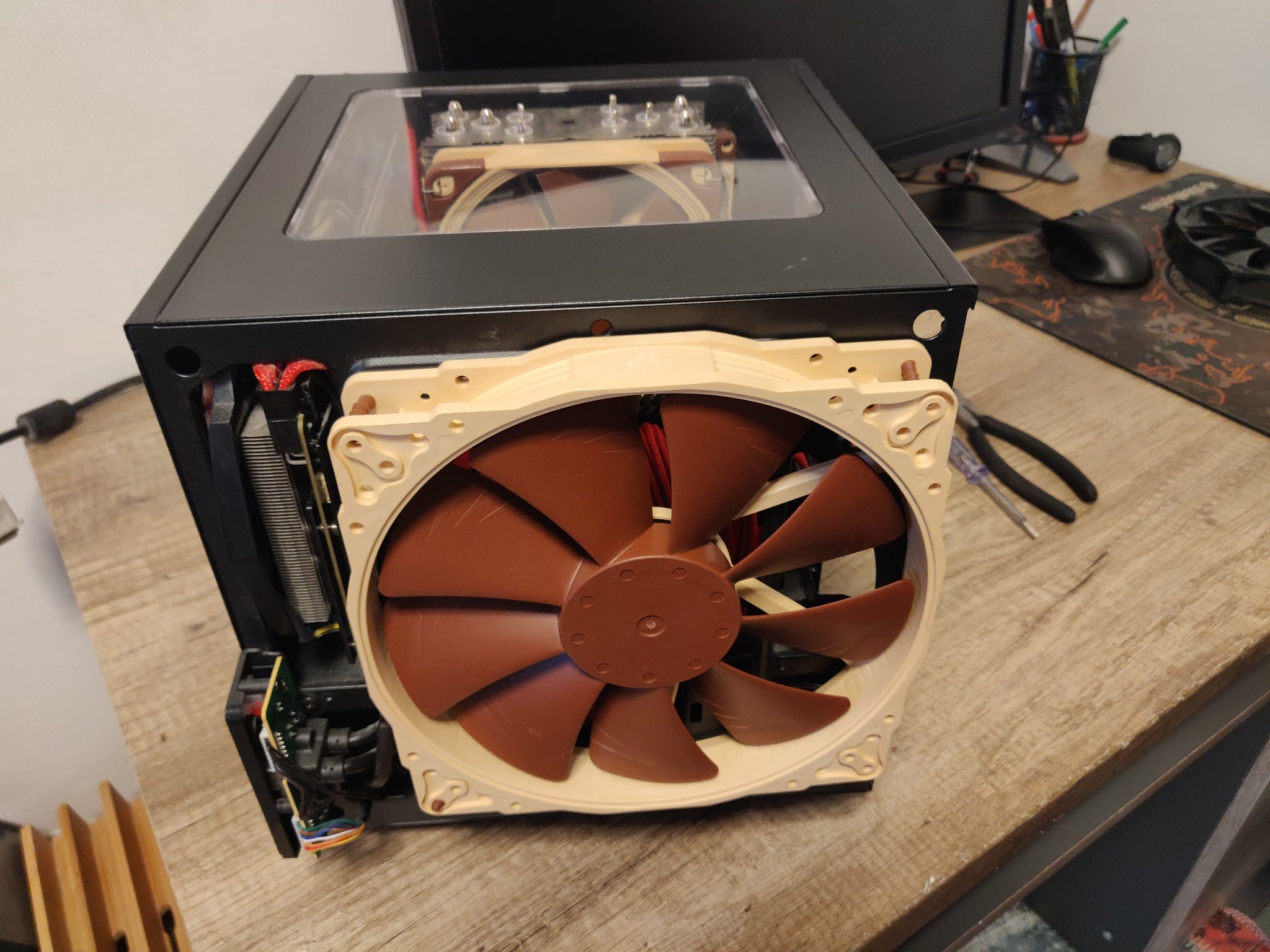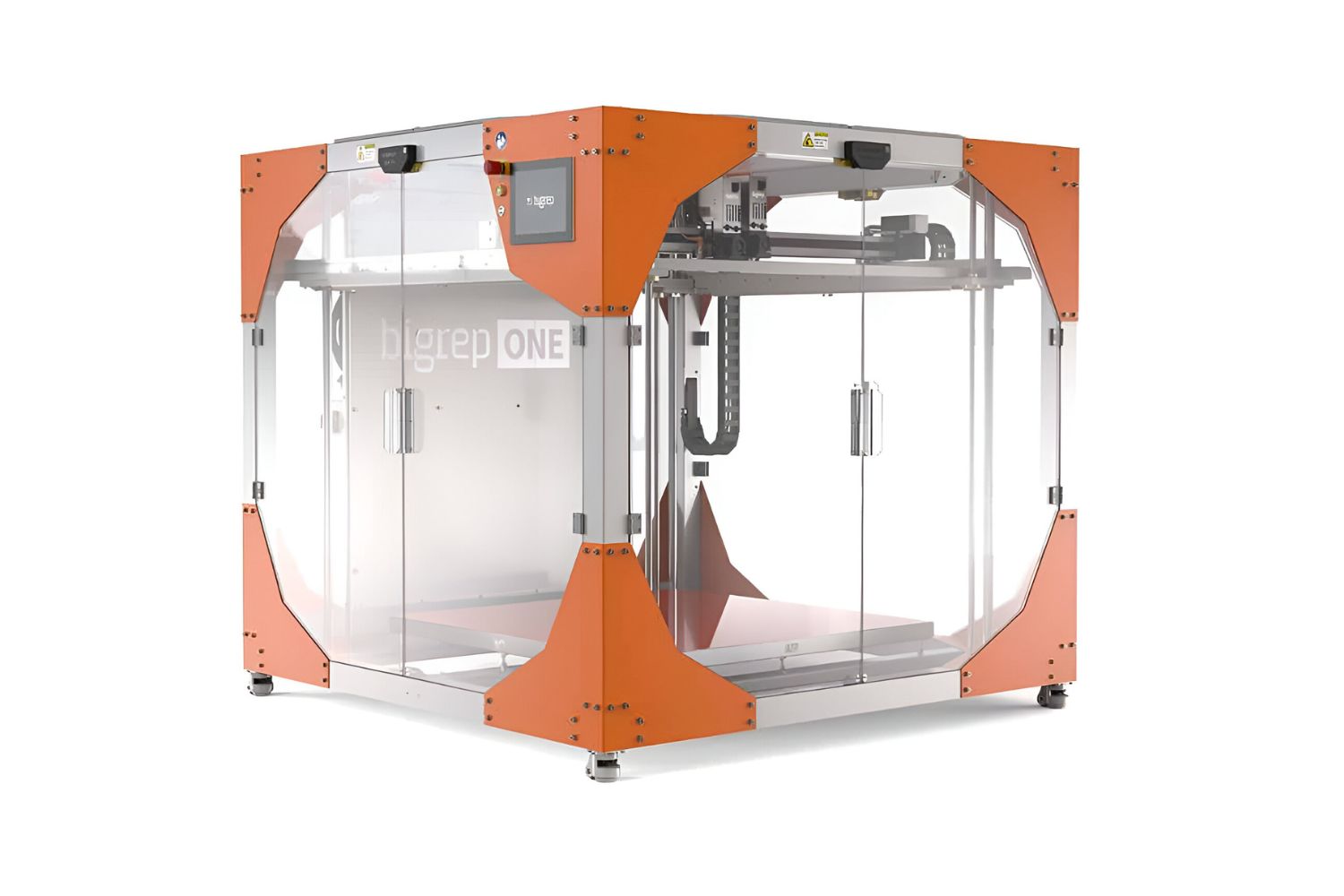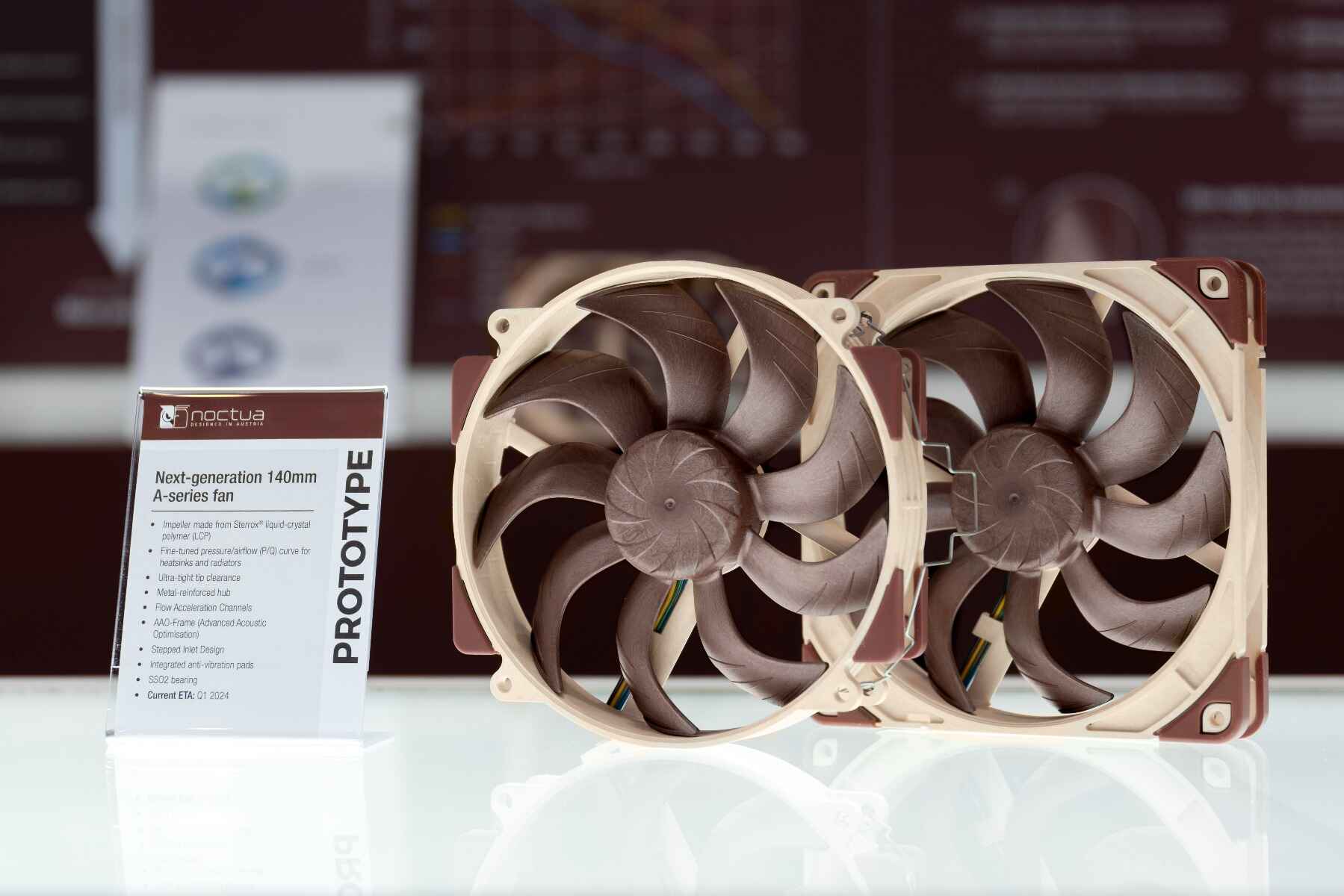Introduction
In today’s high-performance computers, proper cooling is essential to maintain optimal performance and prevent overheating. One of the key components of cooling systems is the case fan, which helps to circulate air and remove heat from the computer’s internal components. However, not all case fans operate at the same speed, and it is important to know the maximum speed at which your case fan can run.
Knowing the maximum speed of your case fan can help you make informed decisions when it comes to optimizing your computer’s cooling performance. It allows you to ensure that the fan is operating at its full potential, which in turn can help maintain lower temperatures and extend the lifespan of your hardware.
In this article, we will discuss why it is important to know the maximum speed of your case fan and explore various methods to check it. Whether you are a gaming enthusiast, a professional working with resource-intensive applications, or simply a user who wants to keep their computer running smoothly, understanding the maximum fan speed can be beneficial.
By the end of this article, you will have a clear understanding of how to determine the maximum speed at which your case fan can run and be equipped with the knowledge to optimize your computer’s cooling performance.
Why is it important to know the maximum speed of your case fan?
Understanding the maximum speed at which your case fan can operate is crucial for several reasons:
- Efficient Cooling: The primary function of a case fan is to cool down the internal components of your computer. By knowing the maximum speed, you can ensure that your fan is running at its highest capacity, facilitating optimal airflow and efficient cooling. This is especially important if you have a high-performance system or overclock your hardware.
- Prevent Overheating: Overheating can lead to a range of issues, including decreased performance, hardware damage, and system instability. By knowing the maximum speed, you can prevent overheating by ensuring that your fan is capable of providing sufficient airflow to keep temperatures within acceptable limits.
- Hardware Longevity: Excessive heat can have detrimental effects on your computer’s internal components. By operating your case fan at its maximum speed, you can help extend the lifespan of your hardware by keeping temperatures in check and reducing the strain on critical components such as the CPU, GPU, and motherboard.
- Custom Fan Profiles: Many modern motherboards offer advanced fan control options, allowing you to create custom profiles for your case fan based on temperature thresholds. Knowing the maximum speed of your fan enables you to fine-tune these profiles and set fan speeds that are optimized for cooling performance based on your specific needs and preferences.
- Noise Control: Case fans can generate noise, especially when running at high speeds. By understanding the maximum speed of your fan, you can strike a balance between cooling performance and noise levels. This allows you to adjust the fan speed accordingly, ensuring a quieter computing experience without compromising on cooling effectiveness.
Overall, knowing the maximum speed of your case fan empowers you to make informed decisions about cooling optimization, prevent overheating, extend the lifespan of your hardware, customize fan profiles, and maintain a quieter computing environment. Now, let’s explore different methods to check the maximum speed of your case fan.
How to check the maximum speed of your case fan
There are several methods you can use to determine the maximum speed at which your case fan can operate. Let’s explore each of these methods:
- Method 1: Manufacturer Specifications: The first and simplest method is to refer to the manufacturer’s specifications for your specific case fan model. These specifications often include information about the fan’s maximum speed, airflow, and noise level. You can usually find this information on the fan’s packaging or the manufacturer’s website. However, keep in mind that the actual speed can vary slightly due to factors like system configuration, fan placement, and voltage regulation.
- Method 2: BIOS/UEFI Options: Another method is to access the BIOS or UEFI settings of your computer. The BIOS/UEFI interface often provides options to monitor and control fan speeds. You can navigate to the Fan Control or Hardware Monitoring section to find information about your case fan’s current speed and adjust the fan settings if needed. Keep in mind that the range of fan speed control options may vary depending on your motherboard model and its BIOS/UEFI capabilities.
- Method 3: Using Hardware Monitoring Software: Many third-party hardware monitoring software tools are available that provide comprehensive information about your system’s hardware, including fan speeds. These programs can display the current speed of your case fan and, in some cases, even the maximum speed it is capable of achieving. Examples of popular hardware monitoring software include HWMonitor, SpeedFan, and Open Hardware Monitor.
- Method 4: Using a Fan Speed Controller: If your case fan is equipped with a fan speed controller, you can use it to manually adjust the speed and determine the maximum achievable speed. Fan speed controllers are either integrated into the fan itself or are standalone devices that connect between the fan and the power source. By gradually increasing the speed using the controller, you can identify the maximum speed at which the fan can run smoothly without any vibration or noise issues.
These methods will help you determine the maximum speed at which your case fan can operate. It’s important to employ a combination of these methods to cross-verify the results and ensure accuracy. However, keep in mind that the actual fan speed may vary slightly due to factors like system load, ambient temperature, and voltage fluctuations. Armed with this information, you can optimize your cooling setup and make necessary adjustments to maintain efficient airflow and temperature control for your computer.
Method 1: Manufacturer Specifications
One of the most straightforward and reliable methods to determine the maximum speed of your case fan is by referring to the manufacturer’s specifications. Each case fan model typically comes with a detailed product manual or packaging that includes information about its maximum speed, airflow, and noise level.
To find the manufacturer’s specifications, you can check the packaging that the case fan came in or visit the manufacturer’s website. Look for the product page or the support section where you can find the specific model of your case fan. The specifications may be listed under a section titled “Technical Details” or “Performance Specifications.”
The manufacturer’s specifications provide you with accurate information about the fan’s maximum speed that it can reach under optimal conditions. It is important to note that the actual fan speed may vary slightly in real-world scenarios due to factors like system configuration, fan placement, and voltage regulation. However, these specifications give you a good starting point to understand the potential capability of your case fan.
When referring to the manufacturer’s specifications, you will often find the maximum fan speed listed in revolutions per minute (RPM). For example, a case fan may have a maximum speed of 1200 RPM. The specifications may also provide additional details such as the fan’s airflow, measured in cubic feet per minute (CFM), and noise level, measured in decibels (dB).
By understanding the manufacturer’s specifications, you can get a clear idea of the maximum speed at which your case fan is designed to operate. This knowledge allows you to optimize your cooling setup and make educated decisions when it comes to maintaining the performance and longevity of your computer.
However, it is important to keep in mind that other factors like system load, ambient temperature, and component efficiency can influence the actual fan speed. Therefore, it is recommended to cross-verify the manufacturer’s specifications with other methods, such as accessing the BIOS/UEFI settings or using hardware monitoring software, to ensure accuracy when determining the maximum speed of your case fan.
Method 2: BIOS/UEFI Options
Another effective method to check the maximum speed of your case fan is by accessing the BIOS/UEFI options of your computer. The BIOS (Basic Input/Output System) or UEFI (Unified Extensible Firmware Interface) settings provide control and monitoring capabilities for various hardware components, including fans.
To access the BIOS/UEFI settings, restart your computer and look for a specific key prompt on the boot screen. The key to access the BIOS/UEFI settings may vary depending on your motherboard manufacturer, but commonly used keys include Del, F2, F10, or Esc. Once you enter the BIOS/UEFI interface, navigate to the Fan Control or Hardware Monitoring section.
In this section, you will find information about your case fan’s current speed and settings. Some BIOS/UEFI interfaces display the fan speeds in RPM (revolutions per minute), allowing you to see the current speed at which your case fan is operating.
To ascertain the maximum speed of your case fan through the BIOS/UEFI settings, look for options like “Fan Control Mode” or “Fan Speed Control.” Depending on your motherboard, you may have various control options, such as “Auto,” “Manual,” or “PWM” (Pulse Width Modulation).
By selecting the appropriate option, you can adjust the fan speeds and observe the highest achievable speed for your case fan. Some modern motherboards provide additional options, such as setting fan speed profiles based on temperature thresholds.
Keep in mind that the available options and functionalities may vary depending on your motherboard model and its BIOS/UEFI settings. Refer to your motherboard’s user manual for guidance on accessing the fan control options and understanding the available settings.
Using the BIOS/UEFI options to check the maximum speed of your case fan offers you a direct way to monitor and control fan speeds. Ensure that you cross-verify the results obtained from this method with other methods, such as referring to the manufacturer’s specifications or using hardware monitoring software, to ensure accuracy.
By utilizing the BIOS/UEFI options, you can fine-tune your fan speed settings and ensure that your case fan operates at its maximum speed, thereby promoting efficient cooling and maintaining optimal temperatures for your computer’s components.
Method 3: Using Hardware Monitoring Software
Hardware monitoring software provides a comprehensive way to monitor and analyze various aspects of your computer’s hardware, including fan speeds. By utilizing such software, you can easily check the maximum speed of your case fan and gather valuable information about its performance.
There are several hardware monitoring software programs available, each with its own set of features and user interface. Some popular options include HWMonitor, SpeedFan, and Open Hardware Monitor. These programs provide real-time data on temperature, fan speeds, voltage levels, and more.
To check the maximum speed of your case fan using hardware monitoring software, follow these steps:
- Download and install a hardware monitoring software: Visit the official website of your preferred software and download the installation package. Once downloaded, follow the on-screen instructions to install the software on your computer.
- Launch the hardware monitoring software: Open the software after it is installed. You will typically be presented with a user-friendly interface displaying various hardware metrics.
- Locate the fan speed information: Look for a section or tab in the software that displays fan speeds. It may be labeled as “Fan Speeds,” “Sensor Readings,” or something similar.
- Identify your case fan: From the list of fan speeds, locate the one that corresponds to your case fan. In some cases, you may see multiple fan speeds if your computer has multiple case fans.
- Observe the fan speed: The hardware monitoring software will display the current speed of your case fan. This can be in the form of RPM (revolutions per minute) or percentage of the maximum speed.
While monitoring the fan speed, you can test the maximum speed by subjecting your computer to intensive tasks or running stress tests. This will help you observe how the fan responds and whether it reaches its maximum speed under increased system load.
Hardware monitoring software provides an excellent tool for tracking the performance of your case fan and understanding its maximum speed. It allows you to make informed decisions regarding fan control, cooling optimization, and overall system health.
However, keep in mind that the software readings may not always be 100% accurate due to the limitations of sensors or software compatibility. It is recommended to cross-verify the results obtained from hardware monitoring software with other methods, such as referring to the manufacturer’s specifications or using the BIOS/UEFI options, to ensure accuracy when determining the maximum speed of your case fan.
Method 4: Using a Fan Speed Controller
If your case fan is equipped with a fan speed controller, you can accurately determine the maximum speed it can reach by using this controller. Fan speed controllers provide the ability to manually adjust the fan speed, allowing you to find the highest achievable speed without sacrificing stability or causing excessive noise.
There are two types of fan speed controllers: those integrated into the fan itself and standalone controllers. The integrated controllers are typically located on the fan’s power cable, while standalone controllers can be separate devices that connect between the fan and the power source.
To determine the maximum speed of your case fan using a fan speed controller:
- Identify the fan speed controller: Locate the fan speed controller on the power cable or, if you are using a standalone controller, ensure it is connected between the fan and the power source.
- Ensure the fan speed controller is set to its maximum setting: Adjust the fan speed controller to its highest setting. This may involve turning a dial, sliding a switch, or using buttons on the controller.
- Observe the fan speed: Once the fan speed controller is set to its maximum setting, observe the fan speed using hardware monitoring software or the BIOS/UEFI options. The RPM value displayed will indicate the maximum speed at which the fan is currently operating.
- Monitor for stability and noise: While the fan is operating at its maximum speed, monitor for stability issues, vibrations, or excessive noise. Ensure that the fan is running smoothly and does not produce any unwanted sounds that may indicate potential problems.
By gradually adjusting the fan speed controller, you can find the maximum speed at which the fan operates smoothly and provide optimal cooling without compromising stability or generating excessive noise.
Using a fan speed controller allows you to have precise control over the speed of your case fan and determine its maximum achievable speed. It gives you the flexibility to fine-tune the fan speed based on your specific cooling requirements and preferences.
It’s important to note that not all case fans come with integrated or compatible speed controllers. If your fan does not have a speed controller, you can consider other methods, such as referring to the manufacturer’s specifications, accessing the BIOS/UEFI options, or using hardware monitoring software, to determine the maximum speed of your case fan.
Remember to cross-verify the results obtained from the fan speed controller method with other methods to ensure accuracy when determining the maximum speed of your case fan.
Factors that can affect the maximum speed of your case fan
While determining the maximum speed of your case fan, it’s important to consider various factors that can affect its performance. These factors can influence how fast the fan can spin and the overall efficiency of the cooling system. Let’s explore some of the key factors:
- Fan Design and Specifications: The design and specifications of the case fan itself play a significant role in determining its maximum speed. Different fan models may have varying motor capabilities, blade designs, and bearing types, all of which can impact the maximum speed at which the fan can operate.
- Fan Size: The size of the case fan, usually measured in millimeters, can affect its maximum speed. Larger fans generally have a greater surface area, allowing for more airflow at lower speeds. However, smaller fans can spin at higher speeds, compensating for the reduced surface area.
- Voltage Input: The voltage provided to the case fan can directly affect its maximum speed. Most case fans are designed to operate at either 12V or 5V, with 12V being more common. Higher voltage inputs can enable faster fan speeds, while lower voltage inputs result in slower speeds.
- Airflow Restrictions: Restricted airflow within the computer case, such as obstructions or inadequate ventilation, can limit the maximum speed that the case fan can achieve. Ensuring proper cable management, unobstructed air vents, and strategic fan placement can help optimize airflow and maximize fan speed.
- System Load and Component Temperature: The workload on your computer system and the temperature of its internal components can impact the maximum speed of your case fan. When the system is under heavy load or the temperature rises, the fan may automatically increase its speed to maintain adequate cooling, but it may not reach its maximum potential if the workload or temperature is not demanding enough.
- Fan Control Options: The fan control options available to you, such as those present in the BIOS/UEFI settings or through hardware monitoring software, can dictate the maximum speed achievable. Some motherboards or software may limit the maximum fan speed for safety, noise reduction, or other reasons, even if the fan itself is capable of spinning at higher speeds.
It’s essential to be aware of these factors and their influence on the maximum speed of your case fan. Remember that the maximum speed stated by the manufacturer may not always be achievable due to these influencing factors. By considering these elements, you can make informed decisions about optimizing your cooling system and ensuring that the fan operates at its highest possible speed for efficient cooling and optimal performance.
Conclusion
Knowing the maximum speed of your case fan is essential for maintaining efficient cooling, preventing overheating, and extending the lifespan of your computer’s hardware. By understanding the factors that affect fan performance and utilizing various methods to check the maximum speed, you can optimize your cooling setup and ensure optimal airflow within your computer case.
Methods such as referring to the manufacturer’s specifications, accessing the BIOS/UEFI options, using hardware monitoring software, and employing a fan speed controller all provide valuable insights into your case fan’s capabilities.
Remember to cross-verify the results obtained from different methods to ensure accuracy, as factors like system load, ambient temperature, voltage input, and airflow restrictions can influence the actual fan speed. Fine-tuning your fan settings based on these results allows you to strike the right balance between cooling performance and noise levels, providing a quieter computing experience without compromising on temperature control.
By knowing the maximum speed of your case fan and optimizing its performance, you can prevent overheating, enhance the longevity of your hardware, and ultimately maintain the smooth operation of your computer system. Regularly monitoring and adjusting the fan speed settings as needed will help ensure that your computer remains cool and performs optimally, even under demanding workloads or resource-intensive tasks.
Take advantage of the available tools and resources, such as manufacturer specifications, hardware monitoring software, and BIOS/UEFI options, to gain a comprehensive understanding of your case fan’s capabilities. This knowledge empowers you to make informed decisions when it comes to cooling optimization, resulting in a more efficient and reliable computer system.







